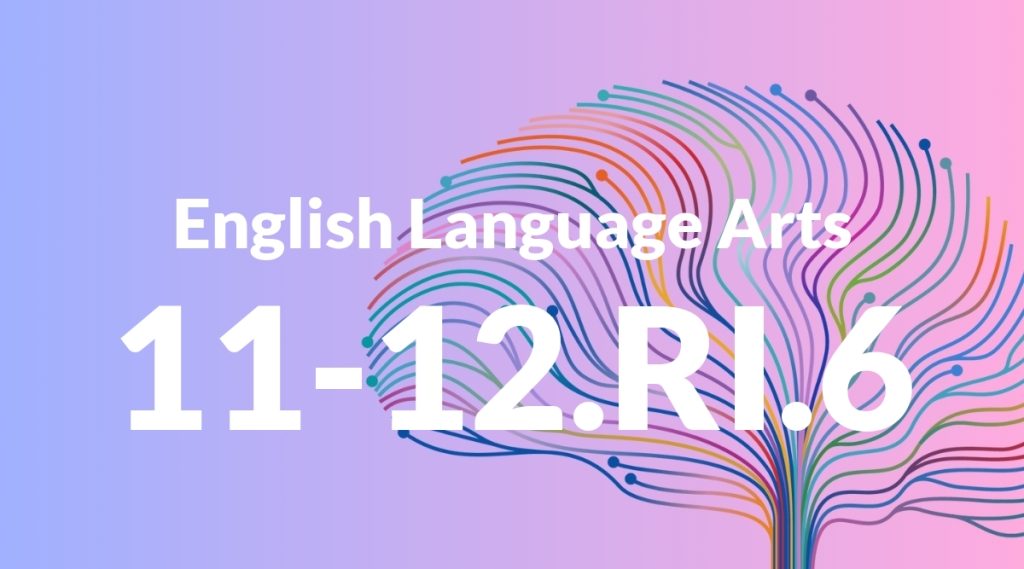Standard: 11-12.RI.6 – Determine an author’s point of view or purpose in a text in which the rhetoric is particularly effective, analyzing how style and content contribute to the power, persuasiveness or beauty of the text.
Grade level: Grade 11-12
Subject: English Language Arts
Domain: Reading: Informational Text
Teacher Overview
This standard emphasizes the importance of understanding an author’s point of view or purpose, especially in texts where rhetorical strategies are effectively employed. It is crucial for students to analyze how the author’s style and content enhance the text’s impact, persuasiveness, or beauty. Mastery of this standard will enhance students’ critical reading and analytical skills, preparing them for advanced academic and real-world tasks. Students should already be familiar with rhetorical devices and argumentative structures. They should also be able to identify main ideas and supporting details within a text.
Upon mastering this standard, students will be equipped to critically evaluate complex texts, discern biases, and enhance their own persuasive writing and speaking abilities.
Common Misconception 1
A common misconception is that students may confuse the author’s point of view with their own opinion. This misunderstanding arises from a lack of distinction between personal reactions and the author’s intent.
Intervention 1
To address this, teachers can emphasize the importance of using textual evidence to support the identification of the author’s point of view. Activities that require students to cite specific passages can help reinforce this skill.
Common Misconception 2
Another misconception is that students might believe all texts are purely informative and lack rhetorical strategies. This can lead to an oversimplified understanding of informational texts.
Intervention 2
Teachers can counter this by providing diverse examples of texts, highlighting the rhetorical strategies used. Analyzing political speeches, advertisements, and scientific articles can help students recognize the persuasive elements in various types of texts.
Prerequisite Knowledge
Students should have a foundational understanding of rhetorical devices, basic argumentative structures, and the ability to identify main ideas and supporting details in a text.
Subsequent Knowledge
After mastering this standard, students will be able to critically evaluate complex texts, discern biases, and develop their own persuasive writing and speaking skills.
Instructional Activities
- Analyze a political speech for rhetorical strategies and discuss its effectiveness.
- Evaluate an editorial piece, identifying the author’s point of view and supporting arguments.
- Examine a historical document to understand the author’s intent and the impact of their rhetoric.
- Critique an advertisement to identify persuasive language and techniques used.
- Review a scientific article to analyze the clarity and persuasiveness of the arguments presented.




